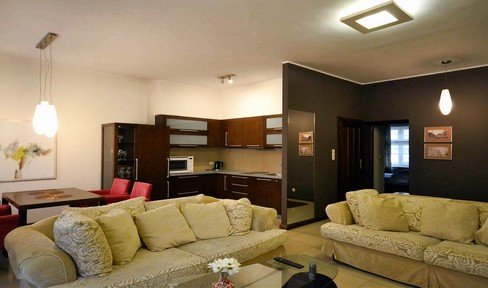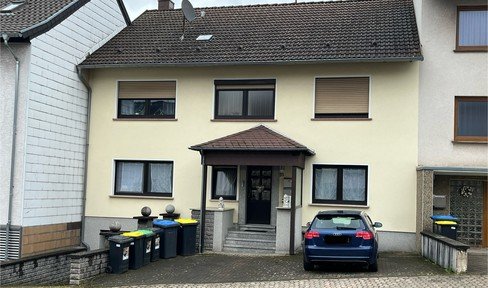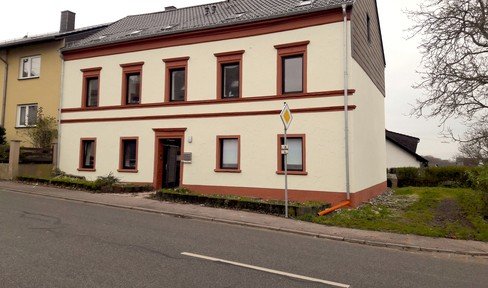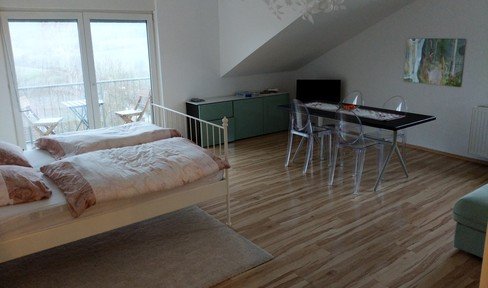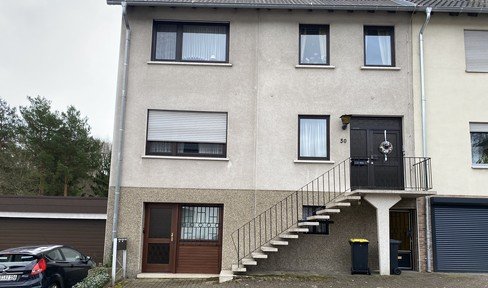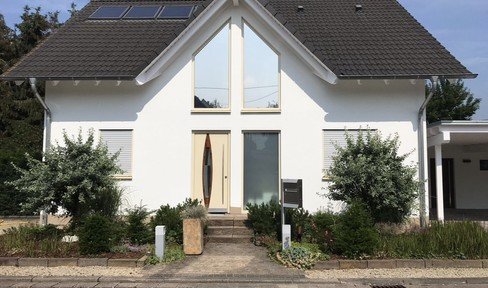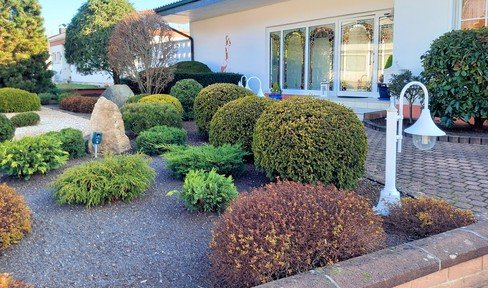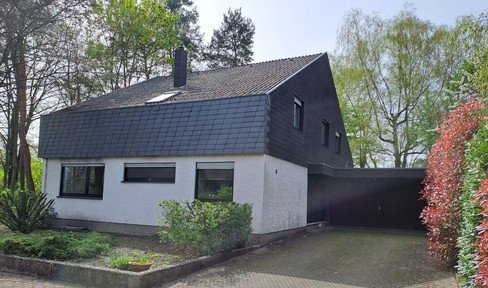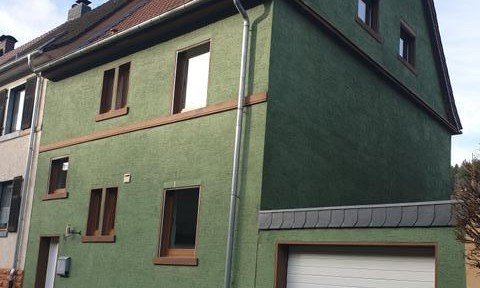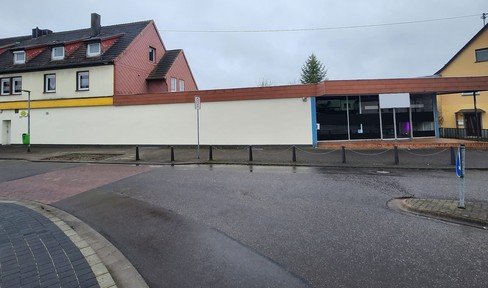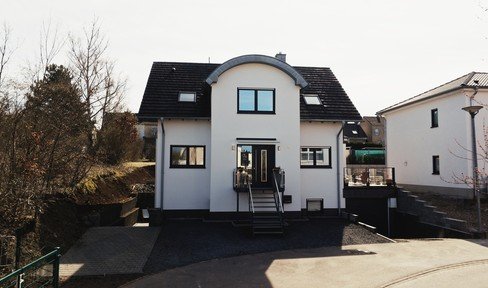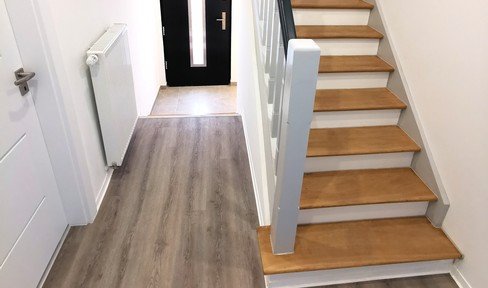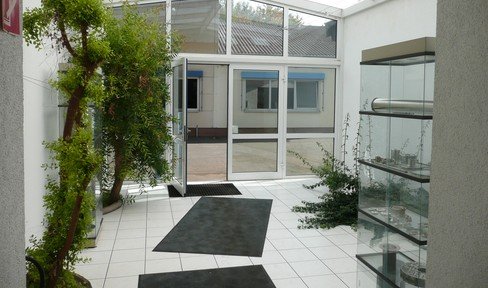- Properties
- Saarland

This page was printed from:
https://www.ohne-makler.net/en/properties/saarland/
Comission-free real estate directly from the owner in Saarland
Here you can find from 30 offers your commission-free property in Saarland
Search in the counties of Saarland
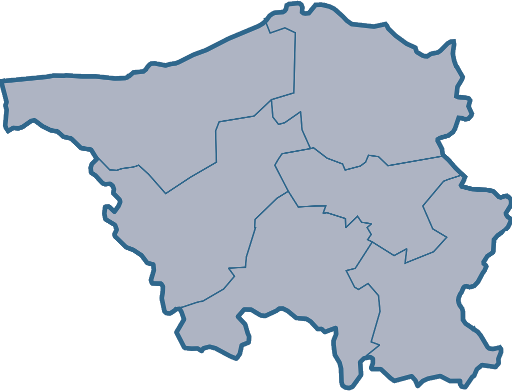
Small but mighty: Conveniently located, scenically diverse, economically successful
With a good 990,000 inhabitants on an area of just under 2,600 km², the small state in the southern west of Germany is only a numerically and territorially negligible size at first glance. Measured by its economic performance, however, the supposed dwarf is a true giant, which not only survived the far-reaching structural change caused by the discontinuation of the once so important mining industry between the 1960s and 1980s in exemplary fashion, but has also positioned itself optimally for the future with its new focus sectors of the automotive industry, steel production, the ceramics industry as well as IT and the information industry. In connection with a very dense road and rail network as well as the neighboring and constantly expanding international cooperation with France and Luxembourg (European region Saar-Lor-Lux), the climatically pleasantly warm Saarland with its fertile soils in the midst of partly still astonishingly natural landscapes has become an increasingly popular business location and place to live. In the greatest possible contrast to the once common prejudice of being just one big black mine with smoking chimneys, the region actually presents itself as an area covered by extensive forests, whose landscapes, such as the 5,000-hectare Warndt to the west of the state capital of Saarbrücken, the Black Forest high forest near Mettlach or the Sankt Ingbert-Kirkel forest area, are ideally suited for long hikes and other leisure activities in all seasons.
With exceptions, the south and west are more expensive than the north and east.
In terms of its settlement structure, the Saarland is more densely populated in the south and west than in the north and east. Its largest cities, Saarbrücken (approx. 177,000 inhabitants), Völklingen (approx. 38,000), Saarlouis (approx. 34,000), Merzig (approx. 30,000), Neunkirchen (approx. 45,000), Homburg (approx. 41,000) and St. Ingbert (approx. 36,000), are also located near the French border and on the border with Rhineland-Palatinate. The largest city in the sparsely populated north is St. Wendel with about 26,000 inhabitants in the district of the same name. In terms of real estate prices, the largest cities are also those with the strongest increases in recent years, in line with the national trend. Saarbrücken (approx. 2,100 euros/m²), Saarlouis (approx. 1,600), Homburg (approx. 1,700) and St. Ingbert (approx. 1,400) stand out in particular. In the recent past, smaller towns such as Perl, Merzig and Mettlach (approx. 1,200 to 1,900 euros/m²) have also benefited from their proximity to the much more expensive Grand Duchy of Luxembourg, where strong demand from the neighboring country for high-quality condominiums and single-family homes has led to an increase of between 4 and 7 percent within the last two years alone. However, cities such as Völklingen, Neunkirchen, Bexbach and Blieskastel are still much more affordable, where apartments are still being offered for considerably less in some cases and houses for around 1,000 euros/m².
In the surrounding countryside of the more expensive Saarbrücken still some real estate bargains wait
Likewise from its geographical situation close Saarbruecken and the expensive Trier the small city Wadern could profit in the northwestern district Merzig Wadern, there the dwelling prices lie already with approx. 2,000, the house prices however still with moderate approx. 1300 euro/m ². In Friedrichsthal, Püttlingen and Sulzbach/Saar, there are apartments between 900 and 1,200 euros/m² and houses between 180,000 and 220,000 euros. In Ottweiler in the district of Neunkirchen, which is only 30 kilometers from Saarbrücken, prices are also currently comparatively low, while in St. Wendel, which was mentioned above, apartments cost an average of around 1,800 euros/m² and houses only a good 160,000 euros. The two cities with 20,000 inhabitants, Lebach and Dillingen/Saar in the center of the Saarlouis district, have also seen a sharp rise in prices, but with current average costs of around 1,000 and just under 1,400 euros/m² respectively, they are still well below the state and national averages. The consequences of the rural exodus, which has been continuing for some time, are even more noticeable in the Saarland than in the rest of Germany and in Rhineland-Palatinate, which has also been badly affected. Prices for building land have risen by 10 percent or more in some cases in Dillingen, Merzig, Ottweiler and in the better locations of Saarbrücken (Rotenbühl, Triller, Staden). The same is true of cold rents for apartments and office space in most communities in the Saarland.
Short facts Real estate market in Saarland:
- Future technologies instead of coal and steel industry dominate Saarland today
- The region is covered by many dense forests and has beautiful waters
- The neighborhood to France and Luxembourg offers many recreational opportunities
- Even in the largest cities, prices are still mostly below the national average.
- Demand from Luxembourg is causing prices to rise in areas near the border
- Favorable opportunities await in the area surrounding the state capital of Saarbrücken.
- The cheapest places to live are in the city center and the north
Properties to Rent in Saarland
Properties for Sale in Saarland
Popular Cities
Diese Seite wurde ausgedruckt von:
https://www.ohne-makler.net/en/properties/saarland/
